Private Eddie Slovik, executed for desertion in 1945, has been memorialized in print and film as an unwitting sufferer of a cruel army. A deeper look, though, reveals a different story.
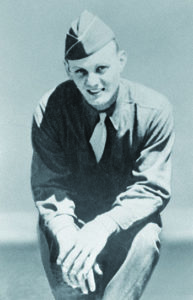
[dropcap]I[/dropcap]t was August 1944, and the 24-year-old replacement’s knees turned to jelly as he experienced artillery fire for the first time on his way to his new outfit. He devised a bold plan to make sure it never happened again. His scheme worked so well that he never again heard enemy fire, but the price Private Eddie D. Slovik paid for that silence was higher than he had bargained for, as he became the only American soldier shot for desertion since the Civil War.
Slovik’s story remained largely unknown until 1948, when journalist and navy veteran William Bradford Huie uncovered it while researching an article, “Are Americans Afraid to Fight?,” for Liberty magazine. Huie followed the article with a bestselling 1954 book, The Execution of Private Slovik, later made into a television movie that attracted a record audience. The book and 1974 film portray Slovik as a victim railroaded by callous army commanders itching to make an example of some sad sack as a way to deter desertions in the wake of the brutal Battle of the Bulge. Huie’s account has become the popular narrative.
As a prosecutor for 27 years with experience in death-penalty cases, I studied the Slovik trial record closely and found the popular narrative to be more of a good story than accurate history. The army, in fact, tried multiple times to give Slovik an out. The finger of blame for the private’s execution, I learned, points in a surprising direction.
EDWARD DONALD SLOVIK had a troubled life from a young age. Born in Detroit on February 18, 1920, he dropped out of school at 15. Before his 21st birthday, Slovik—at five foot six and 138 pounds, an unimposing figure—had been put on probation five times for burglary and assault, sentenced to jail twice, and had served time in a Michigan prison. Paroled in April 1942, Slovik met Antoinette Wisniewski, a brown-eyed, dark-haired bookkeeper five years his senior, and they wed on November 7, 1942. Slovik rode the wartime manufacturing boom, securing a well-paying job as a shipping clerk at the DeSoto division of Chrysler and largely keeping out of trouble.
To Slovik, the war looked like someone else’s problem. Although the army drafted men with criminal records, it did not consider those on parole. So Slovik was safe from the draft—for a time. But on October 22, 1943, the Michigan Parole Board discharged him; he was inducted into the army on January 3, 1944.
Slovik hated being a soldier. “It’s just like being in jail. Only in jail it isn’t this bad,” he complained to his wife in a letter from Camp Wolters, Texas. He was already plotting to avoid combat. “I’m not trying to learn anything cause if you’re too smart or too good they’ll send you overseas,” he wrote her. Slovik must have learned something, though, because on July 25, 1944, the army shipped him to England and then to the Third Replacement Depot in France. “I don’t know why the hell I’m cleaning this rifle,” he mused to a buddy during the voyage to Europe. “I never intend to fire it.”
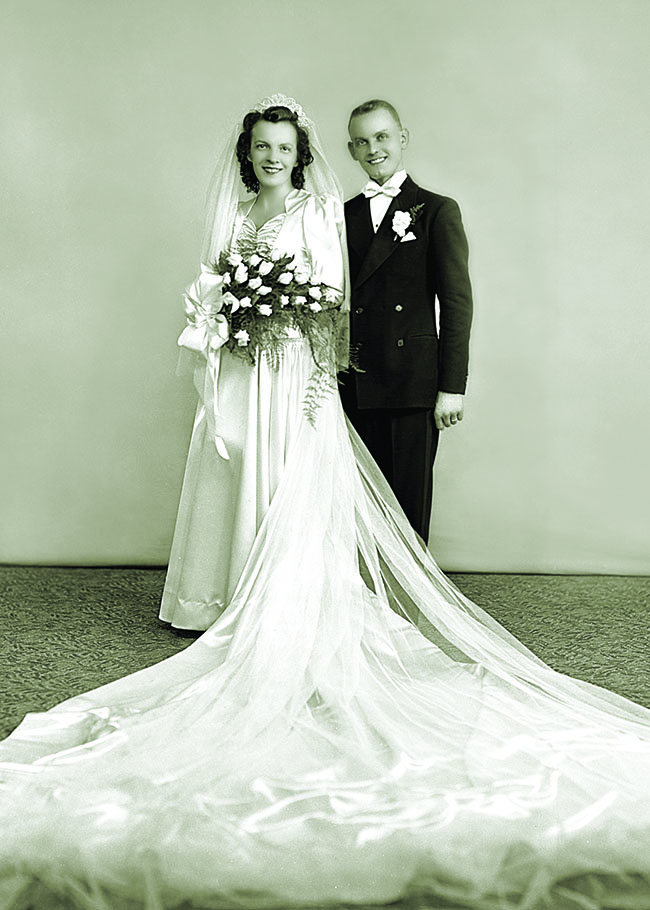
On August 25, 1944, Slovik and 14 other replacements were sent to join Company G, 109th Regiment, 28th Division, located near Elbeuf, France. It was a somber three-hour truck ride as the men passed burned-out vehicles from the recent fighting in the Falaise Gap.
When they arrived at about 11 p.m., Elbeuf was under shellfire, so the men dug in outside the city. The barrage lifted a half hour later, and the replacements were ordered into town to meet up with Company G. A nervous and trembling Slovik, however, stayed behind in his foxhole. In the confusion of the nighttime movement, no one from his new company had even realized he was missing.
The 109th moved out the next day, replaced by the 13th Canadian Provost Corps, a military police outfit. Slovik befriended the Canadians, as did Private John P. Tankey, another 109th replacement, who had simply gotten lost in the previous day’s shuffle. For the next six weeks, Slovik and Tankey made themselves useful, driving trucks, cooking, and guarding German prisoners.
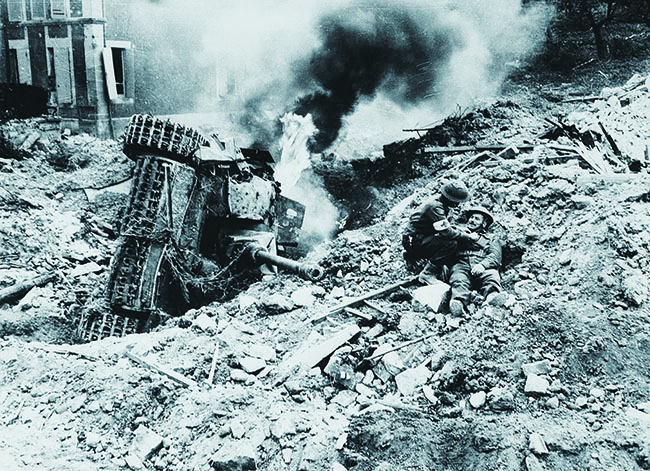
They might have stayed with the Canadians for the war’s duration, but a new commander arrived in early October. He wondered about the two Yanks and contacted the 109th. On October 8, 1944, the 109th retrieved Slovik and Tankey and returned them to Company G, now stationed near Rocherath, Belgium.
Soldiers often got separated from their units, so no questions were asked when Slovik and Tankey returned. Tankey fought with the company until he was wounded on November 5, 1944. But Slovik had other ideas.
He asked company commander Captain Ralph O. Grotte if he would be court-martialed for staying behind in his foxhole on August 25. When Grotte said he would check, Slovik demanded a court-martial. An hour later, he asked Grotte, “If I leave again, will it be desertion?” Grotte answered affirmatively.
Slovik’s intent was obvious, and the captain pulled Tankey aside. “Soldier,” he said, “you better stop your buddy. He is getting himself into serious trouble.” Tankey tried to dissuade Slovik, but Slovik rebuffed him. “Johnny, I know what I’m doing,” he said, and walked away from the company.
The next morning, October 9, Slovik turned himself in to the 112th Military Government Detachment in Rocherath. He handed a green slip of paper to Private William O. Schmidt, a cook. The slip was a confession, handwritten on a post-exchange order form. In it, Slovik admitted to deserting his unit outside Elbeuf on August 25 and again near Rocherath on October 8. He went a step further. “I’ll run away again if I have to go out their [sic],” he wrote in capital letters.
The confession, and the way Slovik had presented it, revealed his true intentions to the army. Slovik was begging for a court-martial because, the army later concluded, he had “deliberately decided that confinement was preferable to the risks of combat, and he deliberately sought the safety and comparative comfort of the guardhouse.” Slovik had done time back home, so jail didn’t faze him. And knowing the army hadn’t shot a deserter in years, Slovik didn’t fear execution; he suspected the army would free jailed deserters once the war ended.
Slovik was returned to the 109th, this time in handcuffs. Lieutenant Colonel Ross C. Henbest, the battalion commander, advised him to tear up his confession and return to Company G, but Slovik refused. He wanted a court-martial, and he soon got one.
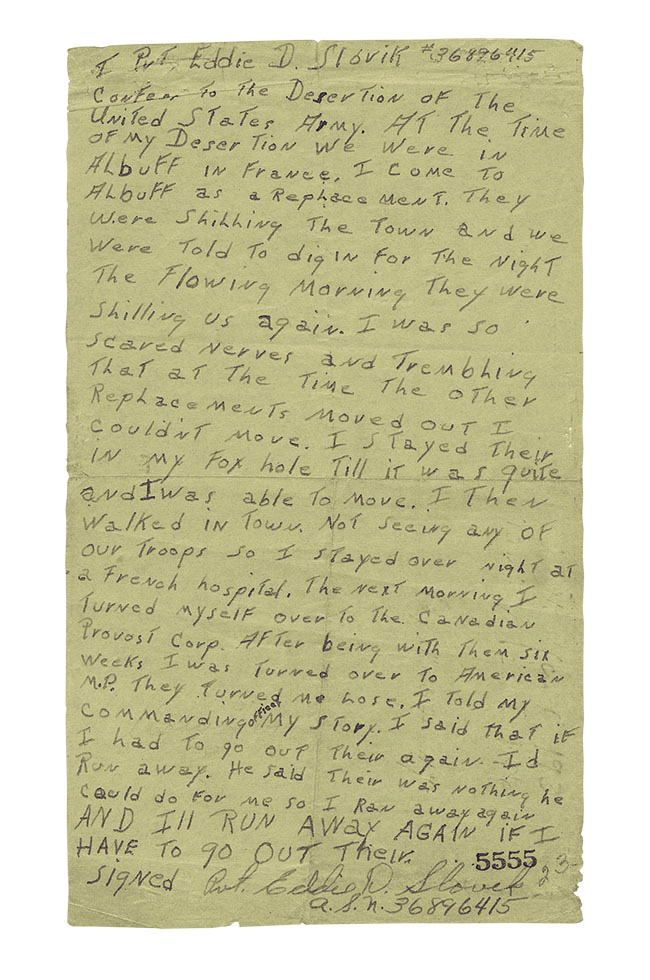
ON OCTOBER 19, 1944, Captain Grotte charged Slovik with deserting on August 25 and on October 8 “to avoid hazardous duty and to shirk important service.” Under the Articles of War, the penalty for wartime desertion was death “or such other punishment as a court-martial may direct.”
Lieutenant Colonel Henry J. Sommer, a 28th Division judge advocate, saw where Slovik’s defiance was heading. On October 29, 1944, he had Slovik brought to his office. Sommer told the private he faced a long prison term and possibly execution. He offered to suspend the charges if Slovik returned to his unit and even promised him a transfer to a different outfit. “I’ll take my court-martial,” Slovik replied. Army psychiatrist Arthur L. Burks examined Slovik and found no evidence of mental illness.
Slovik’s trial took place about two weeks later in Roetgen, Germany, before nine judges, all of them 28th Division staff officers.
Captain Edward P. Woods, 26, represented Slovik. While not an attorney, Woods was an experienced court-martial counsel and had won acquittals for several clients. Guilt was a foregone conclusion—Slovik’s handwritten confession saw to that—but punishment was still an open question.
No deserter had been executed since 1865, when Private William Smitz of the 90th Pennsylvania Infantry faced a firing squad. Of the 2,864 men tried for desertion since 1941, 48 had been sentenced to death, and those sentences were later reduced to imprisonment. The wartime army had executed 140 soldiers—but for murder or rape. Nevertheless, execution was still on the books as a penalty for desertion.
The trial began at 10 a.m. on November 11. The prosecutor, Captain John I. Green, called five witnesses, all brought “directly from the frontlines with clothes torn and muddy,” as one witness put it, perhaps as a ploy to remind the judges of the hard duty Slovik had evaded. Woods made no opening statement, engaged in minimal cross-examination, presented no evidence, and made no closing argument. Choosing not to testify, Slovik stood silent.
In just a little over an hour, the trial ended. The judges found Slovik guilty and unanimously voted that he be “shot to death with musketry.” This was the approved manner of execution for deserters and was considered less dishonorable than hanging, a death typically reserved for rapists and murderers. The judges took a second vote, which produced the same result. “We’ve got to live with this the rest of our lives. Let’s take a third ballot,” suggested the presiding judge, Lieutenant Colonel Guy M. Williams. That vote again produced a death verdict.
But that wasn’t the end of Slovik yet. A capital sentence had to survive several layers of appellate review.
Major General Norman D. Cota, commander of the 28th Division, was the first to review and confirm the sentence on November 27, 1944. If he hadn’t approved it, Cota said, “I don’t know how I could have gone to the line and looked a good soldier in the face.”
The next review was by the theater commander, General Dwight D. Eisenhower. Major Frederick J. Bertolet, a staff attorney, recommended the sentence be confirmed. In Bertolet’s opinion, Slovik had “directly challenged the authority of the government, and future discipline depends upon a resolute reply to this challenge.” Brigadier General Edward C. Betts, another theater judge advocate, concurred.
While awaiting review of his sentence, Slovik realized he was in deeper trouble than he had planned. On December 9, he wrote to Eisenhower, begging for his life “for the sake of my dear wife and mother back home” and expressing remorse “for the sins I’ve committed.” He ended with “I remain Yours for Victory, Pvt. Eddie D. Slovik.”
Slovik went too far, however, when he feigned ignorance. “I didn’t realize at the time what I was doing, or what the word desertion meant,” he wrote to Eisenhower. “I had no intentions of deserting the Army whatsoever.” This was demonstrably false and blunted any impact his letter might otherwise have had. Before departing his unit on October 8, Slovik had confirmed with Captain Grotte that his leaving would constitute desertion. He knew exactly what he was doing when he made his decision. Eisenhower confirmed the sentence on December 23.
One final review was conducted on January 6, 1945, by the European Theater Board of Review, made up of three attorneys from the Judge Advocate General’s department. The board upheld the sentence, and Eisenhower ordered Slovik to be executed.
On January 31, a 12-man firing squad in Sainte-Marie-aux-Mines, France, shot Slovik. In his final days the private blamed his criminal record for his fate. He was being executed, he told a guard, “for bread I stole when I was twelve years old.” Slovik was buried in an unmarked grave in a special section of the Oise-Aisne American Cemetery in France alongside 94 soldiers executed for rape or murder.
IF THE ARMY PLANNED to use Slovik as an example to discourage desertion, it did a poor job. Only the 109th Regiment announced his execution, and then only in a message from the regimental commander to his men. Neither Eisenhower nor Cota notified their commands of the execution, and no civilian or military newspaper reported it.
S. L. A. Marshall, chief army historian for the European Theater, insisted Slovik’s case was so little known that he himself did not learn of it until 1954 when he read Huie’s book. Even Slovik’s widow was kept in the dark, told only that her husband had died under “dishonorable circumstances.”
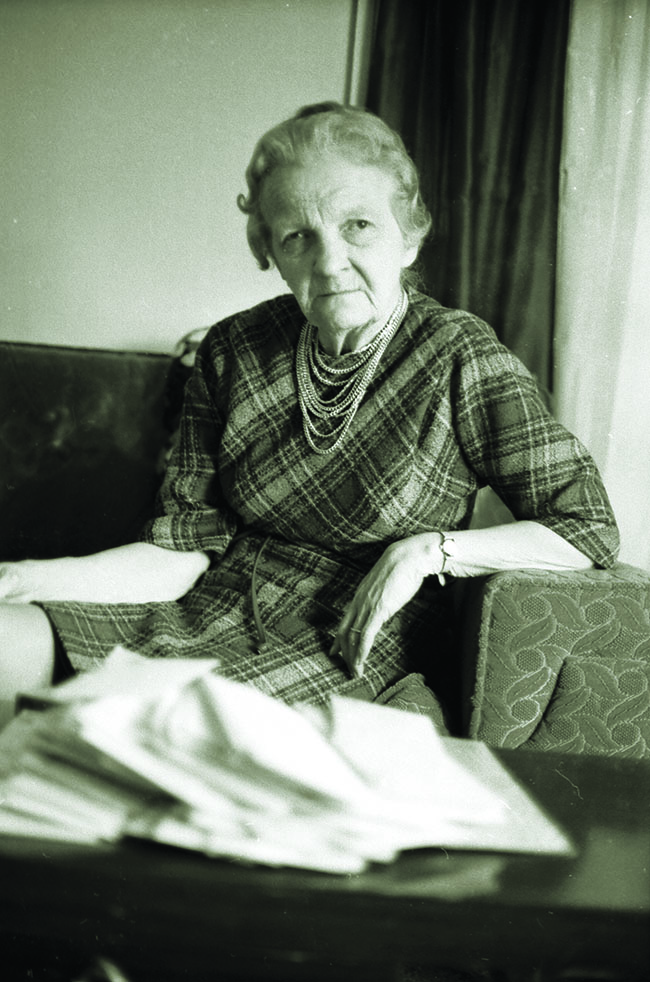
Among those who had heard about it, Slovik’s fate was a dubious deterrent. “Well, buddy, what difference does it make whether the Germans kill me, or our own army shoots me,” one deserter reasoned. “I’m still one dead son of a bitch.”
Who was to blame for Eddie Slovik’s death? The answer is Slovik himself. The army’s wartime justice system was a product of its times and a far cry from today’s military or civilian court systems, with fewer protections for individual rights, almost absolute discretion entrusted to field commanders, and court proceedings conducted in secret. But within that framework, it was Slovik who had incited the harsh outcome.
His fatal mistake was in provoking the army to court-martial him so he could spend the war in the safety of the stockade. He made his goal obvious to his commanders and did everything in his power to force the army’s hand. He pursued a court-martial without spending even one day with his unit, and his defiant promise to “run away again” rubbed a raw nerve. To the army, this was a “direct challenge” that required a “resolute reply.”
Slovik’s blatant defiance boxed in army decision-makers so that they felt they had no choice but to impose the severest level of punishment—death. Because Slovik welcomed imprisonment, it was neither punishment nor a deterrent, so the army upped the ante. “If the death penalty is ever to be imposed for desertion it should be imposed in this case,” Brigadier General E. C. McNeil advised Eis-enhower. Anything less, staff attorney Bertolet urged, “would only have accomplished the accused’s purpose of securing his incarceration and consequent freedom from the dangers which so many of our armed forces are required to face daily.”
Slovik may also have been to blame for another serious error: Woods’s failure to present any evidence that might have led to a lesser sentence. Woods had a duty to honor his client’s wishes, and Slovik seemed to have wanted nothing done. “There just wasn’t much I could do,” the court-martial counsel said later. “Slovik had made his mind up.”
The failure to present mitigating evidence jumps out to anyone who has ever taken part in capital litigation. In my experience as a prosecutor, even in cases where execution is unlikely, defense attorneys present whatever information they have, no matter how weak, that might discourage a death sentence. No one wants to roll the dice with a client’s life.
Woods specifically asked the court to advise Slovik of his right to testify and present evidence even though Woods had already done just that before trial. This is a tactic defense attorneys use to make clear for the record that an obstinate client’s decision not to present a case was made with eyes wide open, despite it being ill-advised and against the counsel’s advice. It heads off later claims that counsel never told the client he could testify. Throughout, Slovik had shown a stubborn self-confidence, bordering on arrogance, and brushed off anyone who tried to steer him from his self-destructive path.
Woods did have some mitigating evidence he could have presented if Slovik had let him. Slovik had served with the Canadians for six weeks and willingly took a rear-echelon job. This showed he was not a complete slacker. While this was not overpowering evidence, it didn’t have to be. A death sentence required a unanimous vote, and the defense had to sway just one of the nine judges to vote for prison instead of death. In addition, Slovik chose not to justify his behavior in so much as a written statement, which the army would have allowed in lieu of testimony.

Even if the judges had imposed a death sentence, this type of evidence might have led to a sentence reduction on review, as happened in a case similar to Slovik’s. That soldier, too, had schemed to serve the war in the stockade, but unlike Slovik, he already had several courts-martial under his belt. He deserted, was sentenced to death, and Eisenhower set a date for his execution. Noting Slovik’s case, army lawyers felt this soldier deserved to be shot as much as Slovik did. At the 11th hour, however, marginal mitigating evidence led Eisenhower to reduce the soldier’s sentence to life imprisonment. The soldier had served with his unit for several months before deserting, and three of the judges recommended clemency based on nothing more than his “soldierly” appearance and “cooperative” attitude at trial. After the war, the sentence was reduced further, and he was paroled from Lewisburg Federal Penitentiary on December 17, 1946. Slovik’s mitigating evidence was comparable, if not stronger, since he lacked the baggage of prior courts-martial.
The record undercuts other parts of the popular narrative.
Slovik’s criminal history couldn’t have affected the outcome of his trial because the judges didn’t know about it; they were told he had no record. His convictions entered the picture on review, but only as a factor militating against clemency.
Nor does the timing of Slovik’s case appear to have played any role in the final decision. He was tried while the 28th Division was engaged in fierce combat in the Hürtgen Forest and Eisenhower’s review occurred during the Battle of the Bulge. None of the records of the decision-making process, however, mention those battles or suggest any special desire to target deserters due to the heavy fighting.
Since January 31, 1945, no other American deserter has faced a firing squad. The Uniform Code of Military Justice has replaced the Articles of War, and execution is still allowed for wartime desertion. The country has not fought a declared war since VJ-Day, however, and attitudes toward capital punishment have changed. Whether seen as a provocateur or a victim, Eddie Slovik is likely to remain the last American soldier to pay the ultimate price for desertion. ✯





